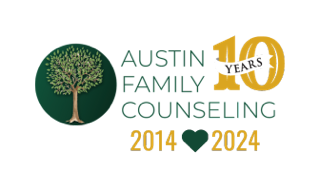April is Autism Awareness Month and April 2, 2017 was the ninth annual World Autism Awareness Day. In an effort to increase awareness and advocacy of what autism is and how beneficial counseling can be for individuals (or family members impacted by someone) on the autism spectrum, it seemed appropriate to share this knowledge.
When reading this, if the following sentences are the only ones that stick with you and help you gain insight when living, working, or interacting with someone on the spectrum, then I have my done job as the author of this blog. If/when you (or a loved one) is diagnosed with autism, do not get stuck in “label-locked thinking”–do not get invested in the word “autism” and what that means to you, your neighbor, or society. Do not focus solely on the diagnosis itself–rather, focus on the symptoms that exist as a result and how it is best to handle those symptoms and what is best for the person.
What Exactly Is Autism?
Autism Spectrum Disorder (ASD) is a developmental disability that generally appears in the first three years of someone’s life. It is considered a spectrum condition because it affects individuals differently and to varying degrees; once you’ve met one person with autism, you have done just that–met ONE person with autism. Generally, people who have ASD have difficulties with communication, behavior, and social relationships; behaviors associated with autism include, but are not limited to: delayed learning language, difficulty making eye contact, narrow and intense interests, poor motor skills, and sensory sensitivities.
A person on the spectrum may exhibit all of these behaviors–or none–and from person to person, the severity of it can differ significantly.
Facts & Figures from the Autism Society and Autism Speaks:
- About 1 percent of the world population has autism spectrum disorder.
- Prevalence in the United States is estimated at 1 in 68 births.
- Boys are nearly 5 times more likely than girls to have autism.
- Approximately 1 in 42 boys and 1 in 189 girls have ASD.
- More than 3.5 million Americans live with an autism spectrum disorder.
- Autism is one of the fastest-growing developmental disabilities in the United States.
- There is no medical detection or cure for autism.
- Autism occurs in all racial, ethnic, and socioeconomic groups.
What Are Sensory Sensitivities and What Do They Look Like?
Sensory issues can manifest in different ways…there are different categories of sensory issues. Someone on the spectrum can display:
- Sensory seeking behavior–which may lead to inattentive or over-focused behavior
- Sensory modulation–through either under-responsiveness or over-responsiveness with movement sensitivity and/or extreme taste/smell sensitivity
It is important to be mindful that, often times, when people on the spectrum are experiencing various sensory issues/sensitivities, a common response is to zone out and/or pull away–which may be perceived as rude or being inattentive, however, that is not the intent of the person at that point in time. Rather, they are trying to process their surroundings and do what they need to do for themselves at that point in time.
Types of Sensory-Related Issues:
- Visual-Processing Problems:
- People with these types of sensory sensitivities may…
- Flick their fingers near their eyes
- Avoid fluorescent lights
- Dislike multicolored floor tiles or anything that forms a lattice or grid
- Dislike things that move rapidly or unexpectedly
- Helpful tips for people with visual-processing problems:
- Experience with different pale-colored sunglass lenses to protect eyes from various sensitivities
- Wear a hat with a brim if you’re under fluorescent lights
- Print reading material on colored paper that does not have significantly contrasting colors
- People with these types of sensory sensitivities may…
- Auditory-Processing Problems:
- People with these types of sensitivities may…
- Cover ears around loud sounds
- Have difficulty hearing hard consonants (and may hear vowels more easily)
- Have a strong, negative reaction to certain words
- Cannot hear when there is background noise
- Helpful tips for people with auditory-processing problems:
- Wear earplugs in noisy places
- Loud sounds may be better tolerated when they are expected or if someone is well rested and not tired
- People with these types of sensitivities may…
- Tactile Sensitivity
- People with these types of sensitivities may…
- Only wear certain articles of clothing or want to take off all clothes
- Seek deep-pressure stimulation
- Pull away when hugged by a familiar figure
- Helpful tips for people with tactile sensitivity:
- Providing various pressure-giving objects (eg: weighted blanket or vest) or firm massages –if wanted/needed
- Try to make clothing more comfortable (eg: remove tags, try to make it as soft as possible)
- People with these types of sensitivities may…
- Olfactory Sensitivity
- People with these types of sensitivities may:
- Avoid or be attracted to certain substances and smells
- Throws a tantrum in the presence of some smells
- Helpful tips for people with olfactory sensitivity:
- Be mindful and aware of smells & scents that cause strong reactions
- People with these types of sensitivities may:
- Taste Sensitivity
- People with these types of sensitivities may:
- Eat only certain food
- Avoid food with certain textures
- Only eat food that are a specific color
- Helpful tips for people with olfactory sensitivity
- This can be a struggle because if someone is adamantly opposed to trying or eating a specific food (or color of food)–sometimes people have to get creative with their ideas. Sometimes consulting with other professionals (eg: dietician) may be the best solution.
- People with these types of sensitivities may:
It’s also important to reiterate–a person on the spectrum may display some, all, or none of these sensory sensitivities and if they do, it can be to varying degrees. The examples above are a little more obvious (and perhaps extreme), but a general awareness about them can be helpful.
For information on how counseling can benefit people affected by autism spectrum disorder or how you can help, check out Autism Spectrum Disorder: How You Can Help (Part 2).












